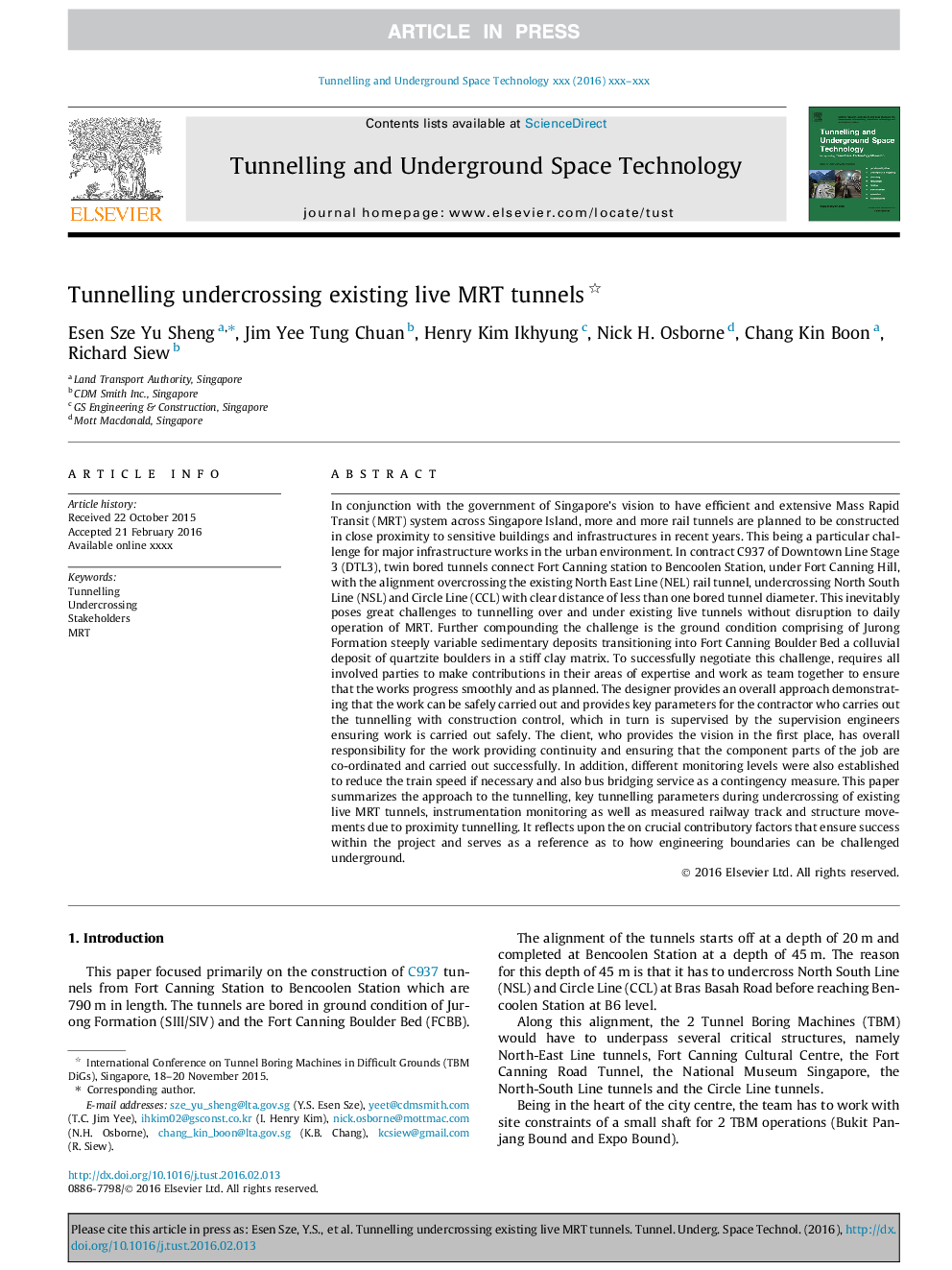| Article ID | Journal | Published Year | Pages | File Type |
|---|---|---|---|---|
| 310603 | Tunnelling and Underground Space Technology | 2016 | 16 Pages |
Abstract
In conjunction with the government of Singapore's vision to have efficient and extensive Mass Rapid Transit (MRT) system across Singapore Island, more and more rail tunnels are planned to be constructed in close proximity to sensitive buildings and infrastructures in recent years. This being a particular challenge for major infrastructure works in the urban environment. In contract C937 of Downtown Line Stage 3 (DTL3), twin bored tunnels connect Fort Canning station to Bencoolen Station, under Fort Canning Hill, with the alignment overcrossing the existing North East Line (NEL) rail tunnel, undercrossing North South Line (NSL) and Circle Line (CCL) with clear distance of less than one bored tunnel diameter. This inevitably poses great challenges to tunnelling over and under existing live tunnels without disruption to daily operation of MRT. Further compounding the challenge is the ground condition comprising of Jurong Formation steeply variable sedimentary deposits transitioning into Fort Canning Boulder Bed a colluvial deposit of quartzite boulders in a stiff clay matrix. To successfully negotiate this challenge, requires all involved parties to make contributions in their areas of expertise and work as team together to ensure that the works progress smoothly and as planned. The designer provides an overall approach demonstrating that the work can be safely carried out and provides key parameters for the contractor who carries out the tunnelling with construction control, which in turn is supervised by the supervision engineers ensuring work is carried out safely. The client, who provides the vision in the first place, has overall responsibility for the work providing continuity and ensuring that the component parts of the job are co-ordinated and carried out successfully. In addition, different monitoring levels were also established to reduce the train speed if necessary and also bus bridging service as a contingency measure. This paper summarizes the approach to the tunnelling, key tunnelling parameters during undercrossing of existing live MRT tunnels, instrumentation monitoring as well as measured railway track and structure movements due to proximity tunnelling. It reflects upon the on crucial contributory factors that ensure success within the project and serves as a reference as to how engineering boundaries can be challenged underground.
Keywords
Related Topics
Physical Sciences and Engineering
Earth and Planetary Sciences
Geotechnical Engineering and Engineering Geology
Authors
Esen Sze Yu Sheng, Jim Yee Tung Chuan, Henry Kim Ikhyung, Nick H. Osborne, Chang Kin Boon, Richard Siew,
